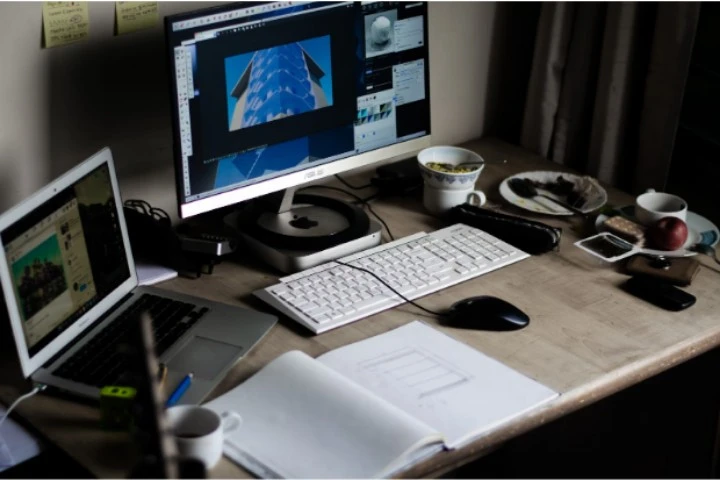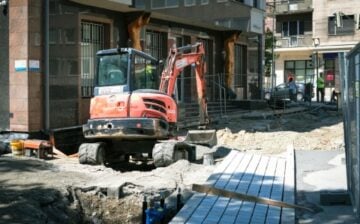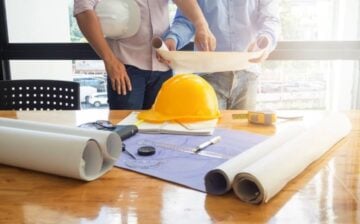
The world of industrial design has undergone a paradigm shift with the advent of 3D rendering technology. This transformative tool has revolutionized architectural visualization, offering unprecedented opportunities for creativity, efficiency, and precision.
Explore the impact of 3D rendering on industrial design, delve into the evolution of traditional design processes, the emergence of 3D rendering, and the specific influence of this technology on architectural visualization. Additionally, address the significance of 3D virtual tours and interactive virtual tours in shaping the future of industrial design.
Evolution of Traditional Design Processes
Before the widespread use of 3D rendering, architects and industrial designers primarily relied on traditional methods for visualizing their creations. Hand-drawn sketches, physical models, and 2D blueprints were the standard tools in the designer’s arsenal. While these methods served their purpose, they often fell short in conveying the intricate details, spatial relationships, and immersive experiences that clients and stakeholders demanded.
The emergence of computer-aided design (CAD) software marked a crucial step forward, allowing designers to create digital representations of their projects. However, the static nature of these early digital models limited their effectiveness in capturing the dynamic aspects of architecture and industrial design. As the demand for more realistic and engaging visualizations grew, the need for a more advanced solution became evident.
Enter 3D Rendering
The breakthrough in 3D rendering technology opened up new possibilities for industrial designers and architects. Rendering involves the creation of two-dimensional images or animations from a three-dimensional model, offering a lifelike representation of the intended design. This technology leverages advanced algorithms to simulate lighting, textures, and shadows, providing a level of realism that was previously unattainable.
One of the primary advantages of 3D rendering is its ability to communicate complex design concepts effectively. Designers can now present their ideas in a visually compelling manner, allowing clients and stakeholders to grasp the spatial relationships, materials, and aesthetics of a project with unprecedented clarity. This enhanced communication streamlines decision-making processes and fosters a deeper understanding of the designer’s vision.
Impact on Architectural Visualization
Architectural visualization, especially with the aid of CAD automation, plays a pivotal role in conveying the essence of a design to clients and collaborators. With 3D rendering, architects can create highly detailed and realistic visualizations that showcase the interplay of light and shadow, the texture of materials, and the overall ambiance of a space. This level of detail not only enhances the visual appeal but also facilitates better-informed decision-making throughout the design and construction phases.
Moreover, 3D rendering enables architects to experiment with different design iterations rapidly. The flexibility of digital models allows for quick adjustments to layouts, materials, and aesthetics. This iterative process fosters a more dynamic and responsive approach to design, ensuring that the final product aligns closely with the client’s expectations and functional requirements.
The Role of 3D Virtual Tours
As technology continues to advance, the demand for immersive experiences in architectural visualization has grown. 3D virtual tours have emerged as a powerful tool to address this demand. These tours enable clients and stakeholders to navigate through a digital representation of the designed space, providing a first-person perspective that goes beyond static images or animations.
A 3D virtual tour allows users to explore every nook and cranny of a building or industrial design, simulating the experience of physically being present in the space. This not only enhances the understanding of spatial relationships but also enables users to evaluate the functionality and flow of the design. Clients can experience the design in a more holistic manner, leading to more informed feedback and collaborative decision-making.
The interactive nature of 3D virtual tours adds another layer of engagement to the design process. Users can interact with elements in the virtual environment, such as opening doors, changing lighting conditions, or even modifying interior furnishings. This interactivity fosters a sense of ownership and involvement, making clients feel more connected to the design and more confident in the decision-making process.
Shaping the Future of Design Collaboration
Building upon the concept of 3D virtual tours, interactive virtual tours take architectural visualization to the next level. Interactive tours allow users not only to navigate through the virtual environment but also to actively participate in the design process. Designers can incorporate interactive elements that enable clients to make real-time changes and explore various design options.
For example, clients can modify the layout of a room, experiment with different color schemes, or select from a range of materials for surfaces. These changes are reflected instantly in the virtual environment, providing clients with a hands-on experience of the design evolution. This level of interactivity promotes a collaborative and iterative design process, where clients become co-creators in shaping the final outcome.
The collaborative nature of interactive virtual tours extends beyond client-designer interactions. Stakeholders from various disciplines, such as engineers, contractors, and interior designers, can actively engage with the virtual model, contributing their expertise and insights. This collaborative approach fosters a more integrated and efficient design and construction process, reducing the likelihood of misunderstandings and discrepancies.
Known Challenges and Considerations
While the impact of 3D rendering and virtual tours on industrial design is undeniably positive, there are challenges and considerations that designers must navigate. One such challenge is the need for skilled professionals who can harness the full potential of these technologies. Designers and architects must invest in training to stay updated on the latest tools and techniques, ensuring that they can effectively leverage 3D rendering for optimal results.
Another consideration is the balance between realism and creativity. While 3D rendering aims to create highly realistic visualizations, designers must strike a balance that aligns with the project’s goals. Sometimes, a stylized or abstract representation may be more appropriate to convey the intended aesthetic or concept.
Furthermore, the integration of 3D rendering into existing design workflows requires careful planning. Designers must ensure compatibility with other software and consider the scalability of their chosen tools to accommodate projects of varying sizes and complexities.
Conclusion
The impact of 3D rendering on architectural visualization is nothing short of revolutionary. This technology has transformed the way designers communicate, collaborate, and bring their visions to life. The shift from traditional design processes to 3D rendering has streamlined workflows, enhanced communication, and empowered clients to actively participate in the design process.
The introduction of 3D virtual tours and interactive virtual tours represents the next frontier in architectural visualization. These immersive experiences not only facilitate a deeper understanding of design concepts but also empower clients to actively engage in the creative process. As technology continues to advance, the fusion of 3D rendering and interactive virtual tours will undoubtedly shape the future of industrial design, ushering in an era of unprecedented collaboration, efficiency, and creativity.
We hope you found this blog post on Revolutionizing Industrial Design: The Impact of 3D Rendering on Architectural Visualization, useful. Be sure to check out our post on Giving Some Exemplary Architectural Touches to a House for more great tips!
Have Experience in the Moving Industry? Want an Additional Income Stream? Work With All Around Moving!
Partner with us and we’ll help you make money. Click here to learn more.





